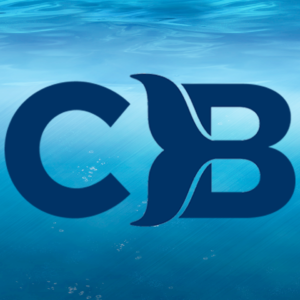1/10,000th of 1%
It’s Not Their Home
According to Dr. Naomi Rose, a Marine Mammal Scientist at the Animal Welfare Institute in Washington, DC, 1/10,000th of 1% of their natural range is what we can offer cetaceans in the finest facilities we have available. That is like spending the rest of your lifetime confined to a very small space – perhaps your bathroom – and the suffering you’d experience from that fact alone is obvious.
Consider SeaWorld, which has been in the news a great deal since the release of Blackfish. Despite dropping attendance and a large number of orca deaths, they refuse to get out of the cetacean captivity business. Rather than retire “their” orcas and dolphins to sanctuaries, SeaWorld continues to invest in a multi-million-dollar ad campaigns to convince the public that their orcas and dolphins live well in their concrete tanks. We need to counter this message, and to expose SeaWorld’s abuse for what it is. We need to keep the pressure on until their share price falls to the point where this cruel business no longer makes financial sense.
Support organizations which are fighting to END CAPTIVITY!
It is deplorable to take a highly intelligent animal out of its environment, and the complex social structures it relies on to live in that environment, and to confine it – all for the sake of our entertainment. Globally, approximately 3,000 whales and dolphins are confined in this way – in various aquaria and marine parks. These numbers need to be replenished by several hundreds every year, in large part because the death rates in captivity are so high.
Have you ever wondered why it is that captive whales and dolphins live less than half as long as they do in the wild? And this despite being kept in an environment which is free of predators, pollution or any other kind of physical threat? The obvious answer is that stress and boredom severely impacts their health, which is entirely unsurprising when we consider their essential nature and intelligence.
The fight is on to bring an end to this absurdly cruel practice. Whale and Dolphin Conservation’s approach focuses on three key areas – taking on the industry on both the supply and demand sides, as well as working to provide options for those individuals already in captivity. Undoing the damage caused by captivity is necessarily complex, and WDC’s multi-faceted approach provides us with useful model.
- Creating sea sanctuaries or natural sea pens where whales and dolphins released from captivity can be relocated if they can’t be returned to the wild; providing expert advise to other potential sanctuaries.
- Stopping the supply of whales and dolphins to captive facilities by exposing the cruelty issues associated with captivity, pressuring governments to ban captures, and encouraging airlines to end the transport of captives to aquaria.
- Ending the demand for whale and dolphin shows by raising awareness among the public, and campaigning to stop tour operators and cruise companies from promoting trips to these shows
If you plan to visit a Marine Park – here are a few points for your consideration:
- The dolphins appear happy (they can’t control facial muscles the way we can, and appear to be ‘smiling’ all the time). Unless you already know, it’s easy to not realize that they are living a stressful and often dramatically shortened life in captivity.
- Many have experienced the trauma of having been taken from their families in the wild. Despite being social creatures who typically swim up to 100 miles per day, they are now forced to live in artificial conditions, away from their natural pods and family groups, in tiny tanks or enclosures.
- Methods used to capture and transport dolphins are necessarily and horrifically cruel, and many die in the process.
- In captivity, the stress of their confinement often results in behavioral abnormalities, illness, and significantly lowered resistance to disease.
- When not taking part in shows, dolphins are often kept in holding tanks which are much smaller than the show pools.
- In captive swim-with-dolphin programs, dolphins cannot escape from human swimmers when they don’t want to interact with them. The heightened stress and anxiety this creates is often managed with medication.
- Dolphins eat fresh fish in the wild, but in captivity they have to eat dead fish which have been frozen, and which have been supplemented with vitamins and minerals, suggesting that it doesn’t have the same nutritional value. Dolphins are also denied the opportunity to exhibit natural hunting behaviour, being instead forced to perform for their food.
- Their essential nature as highly intelligent and social beings means that they require a great deal of stimulation in order to function as normal, healthy individuals. In captivity, they are denied this, and we humans should easily be able to empathize with how difficult it must be to endure this kind of life!!
Before you make travel plans, look here!
A much better alternative
Find a responsible dolphin or whale watching excursion, and support the growing industry of ecotourism. Better still, watch them from land where conditions make it possible.
And don’t forget to donate to organizations like AFD, WDC, Sea Shepherd and Ric O’Barry’s Dolphin Project. These organizations are funded entirely by donations, and they need the funds to perform research, to develop sanctuaries, and to lobby legislators for better standards of care in existing facilities, as well as for an end to capture and captivity altogether.


